Raw, deviant, adventurous. It all covers Undercover, a line whose designer, Jun Takahashi, makes no secret of his appreciation for the darker side of style. The range bridges the gap between couture and streetwear, yielding pieces simultaneously luxe and louche.
That Takahashi worked with Rei Kawakubo, who founded Comme des Garçons, should come as no surprise. As a student at Bunka Fashion College in Tokyo, he was enthralled by punk culture and subversive style. Witnessing a Comme des Garçons show at that young age catapulted his thought process in a different direction.
His approach to fashion had always been outlandish, but visions of elaborate headgear, frothy skirts, and bold patterns signaled that sartorial adventure could, for many, be a way of life. There was a certain freedom in dressing with such reckless abandon and bold appreciation for color and print. It was creative—and that ultimately mattered far more than any fleeting trend ever could.
NOWHERE, Everywhere
So inspired was Takahashi that he founded Undercover in 1990. At the time, he worked closely with NIGO, the beloved designer who established A Bathing Ape (BAPE) some years later. Their first collaboration came in the form of NOWHERE, a retail shop that opened in 1993. Here, Takahashi introduced his T-shirt collection, and eventually the store flourished thanks to its extensive Undercover and BAPE lineup.
To say that NOWHERE changed the game is an understatement. During its earliest days, the Urahara district where it was located exuded the best type of independent vibe. It was fresh, unassuming, and bohemian. There was an “anything” goes mentality that made it the perfect spot for youth to collect and express themselves.
The two added to their store’s collection, introducing a number of Japanese lines alongside select pieces from America. The style at the time was known as Urahara kei. It was a look largely characterized by boldly patterned T-shirts, often depicting playful characters, along with logo-emblazoned hoodies and heavy baggy denim that ruled the ’90s circuit. It was a different, stylistic approach to casual dressing that carried tremendous influence from the worlds of hip-hop, skate, and reggae.
Eventually NOWHERE closed shop in 2000, as both men had long since carved out impressive design careers of their own. But the gift that it brought both of them was never far from their minds, and in ’09 the two opened a temporary NOWHERE spot in Hong Kong. The newest store honored the original location on an aesthetic level, but the garments were of decidedly higher quality.
Polished Punk
To understand Takahashi’s influence, it helps to delve into his roots. During the late ’80s, he was the front man for the Tokyo Sex Pistols, a time during which he also happened to idolize Vivienne Westwood. The veritable grand dame of punk knew rebellious style quite like no other. And if there was one principle by which Takahashi could abide, it was rebellion.
Only his aim was to reinterpret the look in his own way. His goal was to create attire that was as striking as it was sharp, as appealing as it was strange, as chaotic as it was fantastic. The juxtaposition was dramatic, and not for the timid. There was a sense that streetwear would never be the same if Takahashi had anything to do with it.
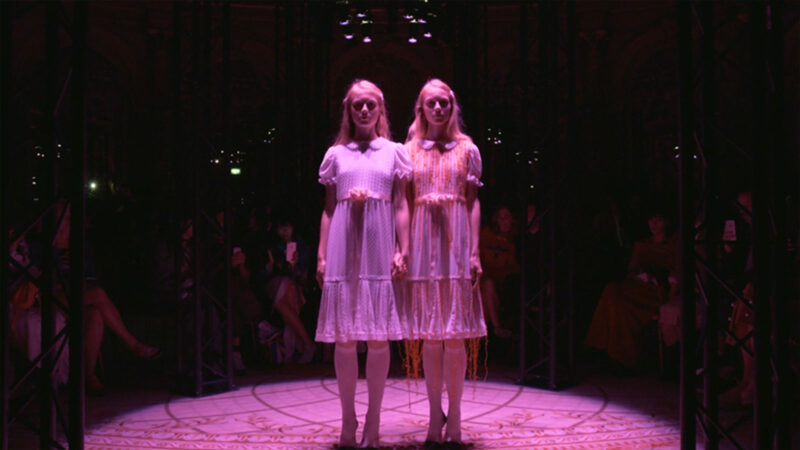
2018SS “JANUS THE TWO FACED GOD”
2018SS “JANUS THE TWO FACED GOD”
Indeed, he strayed from the tried and true. He wasn’t interested so much in the clean lines as in what lived underneath them. Undercover was dark, yes, but also fearless, deeply imaginative, and even playful at times. Who else could infuse a spring show with inspiration from The Shining, complete with freakishly ghoulish identical twins in identical garb, sashaying down the runway, as he did in 2018?
Other films have played roles, as well, like Stanley Kubrick’s legendary 2001: A Space Odyssey, for which Takahashi displayed puffy parkas that resembled space attire and billowing ponchos bearing iconic scenes from the big screen. Then there was the dystopian-influenced lineup clearly brought to life in part because of A Clockwork Orange.
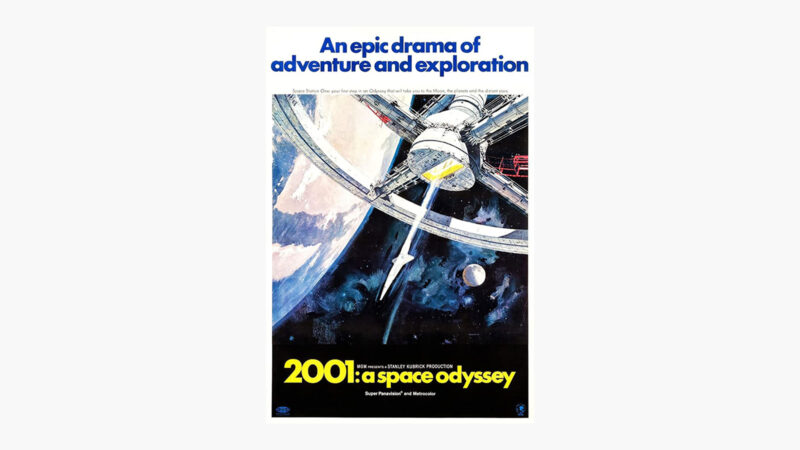
2001: A Space Odyssey (1968) 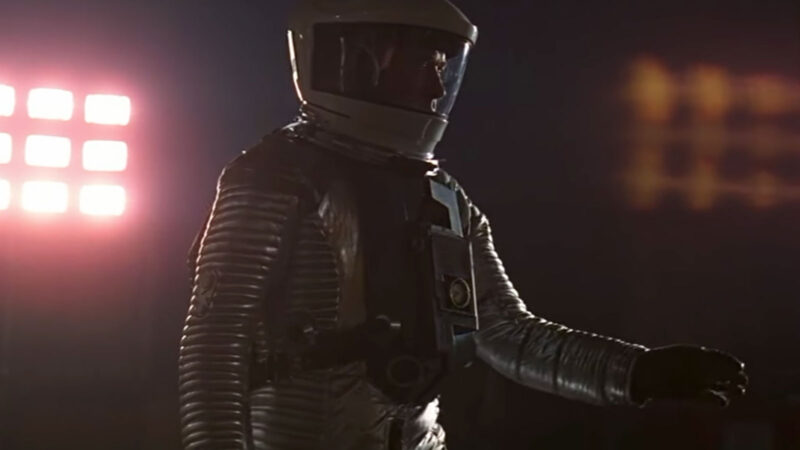
2001: A Space Odyssey (1968)
Building collections around movies may seem a bit of a foible, not quite in line with the visionary tactics for which Undercover has long been known. But the peculiarities in the execution are what make them so unforgettable and masterful. Sometimes the suggestions are subtle, at other times obvious. But the end result feels bravely scary and accurate for the times. When, but now, could fashion such as this ever have a chance to appeal to the masses?
Style Statements
It’s not all madness—Takahashi himself has referenced his own style as “cute” and even “beautiful.” These are the words which draw an audience, no doubt, but darker shadows lend these pieces of luxury even greater appeal. Punk followers recognize that there’s just as much room for the pretty as the imperfect.
Takahashi also spares nothing when it comes to developing garments of quality. The clothing may be “noisy,” a term the brand’s own makers have coined (“We Make Noise Not Clothes”), but it’s of the highest distinction for its class. It’s clear that it’s entirely possible to convey a sense of elegance without sacrificing an appreciation for punk.
It comes down to making a statement without falling into couture-like trappings that would otherwise pull Takahashi from his comfort zone. That realm is where he’s at his best, and his menswear collection honors the dualities beautifully. There are witty touches here and there coupled with juxtapositions in style. Take in the beautiful tailoring as it mingles alongside the tough utilitarian and the artisanal avant-garde. Delve into the macabre if you dare. Marvel at the way different colors, silhouettes, and fabrics champion what it means to “go Undercover.”
It’s in the inventive design process, which operates in a manner one might simply consider deconstructed. There’s nothing elegant about it at a glance, after all—it’s rough, it’s a bit anarchic, it’s perverse. It’s there where the creativity begins, where the magic floats off the page and onto the runway.
The Highlights
Introductions can be uncomfortable, but they can also be exciting. If you feel that you’re venturing beyond your personal fashion whims, take baby steps and start with what Takahashi himself first brought to the style world: a graphic T-shirt. One that celebrates the Undercover aesthetic is the Cindy Sherman tee, one of many styles that features the iconic photographer’s self-portrait against a dark and moody backdrop.
Cobwebs? Why not? Undercover transposes the spider silk effect onto a series of garments, including oversized button-down shirts, jackets, and shorts. It’s part of a larger collection of horror-inspired designs—but, as with so many of the line’s other pieces, feels remarkably polished thanks to its fine tailoring and flattering cuts.
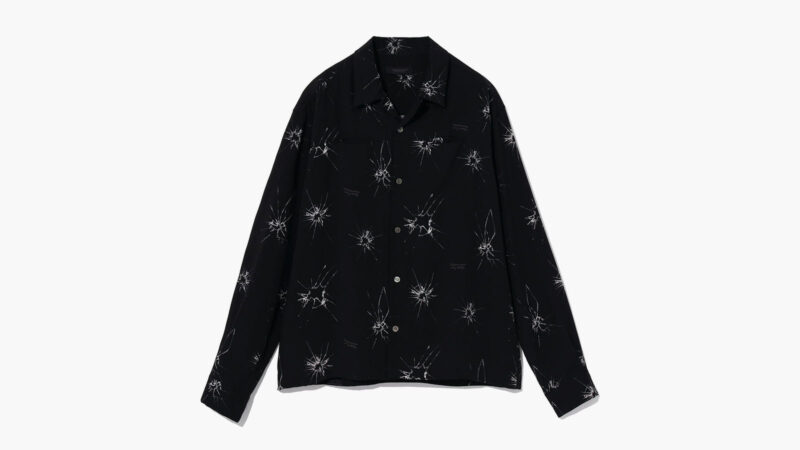
Oversized button-down shirts 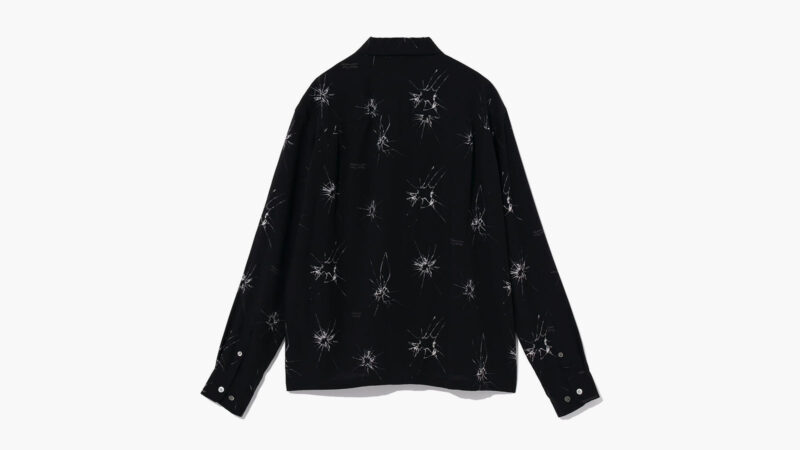
Oversized button-down shirts
For those committed to the “fashion as expression” movement, there can be no greater option than the long and lean black jacket adorned with “I hold a beast, an angel, and a madman in me.” It’s, again, about adjacency—studies in contrasts, the balance between good and evil, teetering on the edge of something wicked. It’s at once dark and approachable, a factor that’s played greatly into the Undercover aesthetic over the years.
There are even nods to Undercover’s past—to the ’90s heyday, when plaid shirts were practically uniform and a requisite part of any authentic grunge kid’s world. They’re sold in different colors, and you can take your pick: channeling genuine Harajuku style might mean wearing it over a screen-print tee or with baggy pants and boots, or you might take the route that takes you back to your own youth by throwing it on over a Pearl Jam T-shirt and slipping into your trusty Dr. Martens.

Plaid shirts 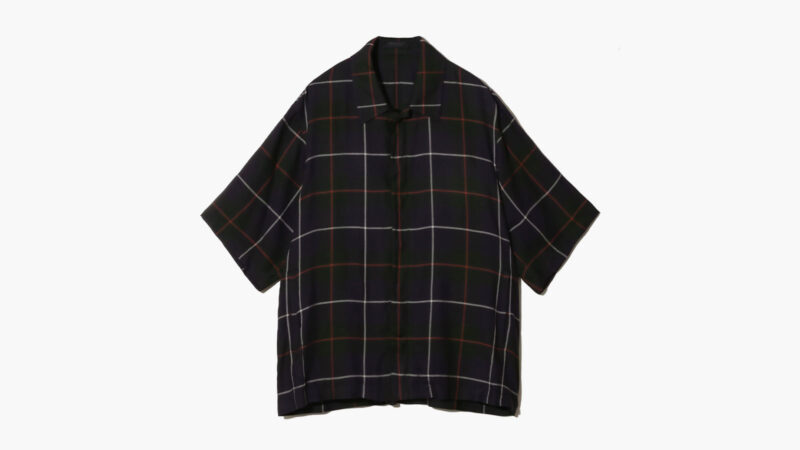
Plaid shirts 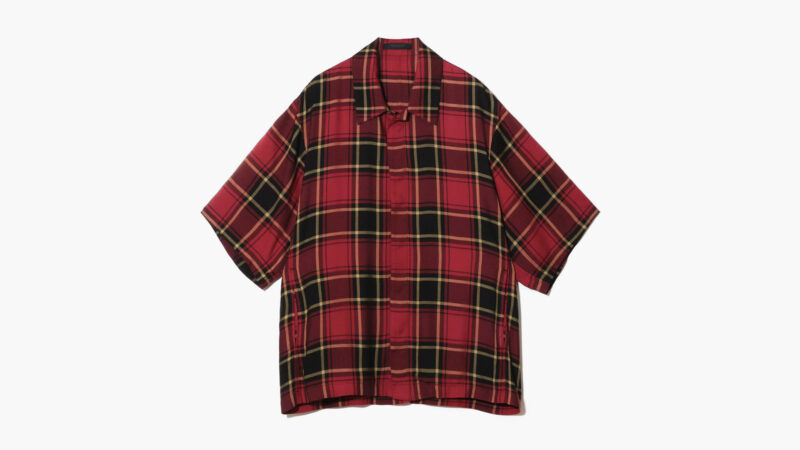
Plaid shirts
Accessories, of course, are essential to any well-rounded wardrobe. There are styles all over the map, ranging from the bold—expect plenty of curious glances—to the meek. The Dylan Thomas quote about beasts, angels, and madmen appears elsewhere, for example, as on the hyper-practical nylon tote and the sleek silver bracelet, the latter being a suitable alternative for those who prefer to make quieter statements.
True to form, the plain black wallet takes a spooky turn when it’s embellished with a textural Dracula image. Thomas’s most renowned work spurred other designs, too, including a surprisingly suave wool and silk carryall that seems like something Dracula himself would have appreciated.
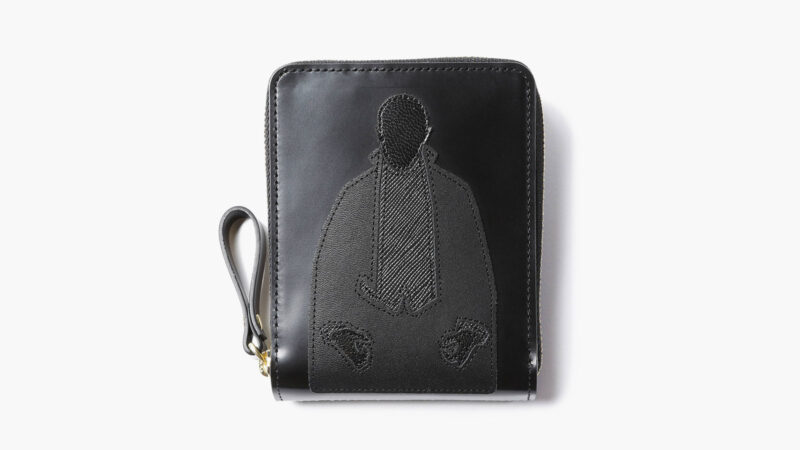
Plain black wallet 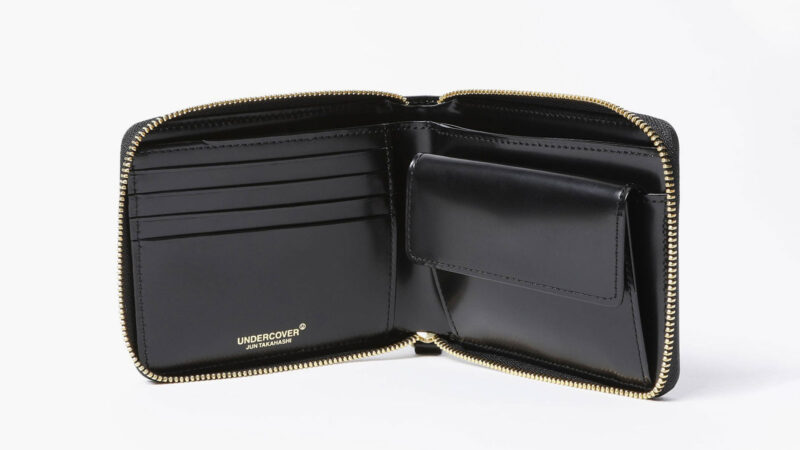
Plain black wallet
As it happens, everyone wants a little piece of Undercover. The imprint has teamed up with many a name to everything from sharp footwear to fresh streetwear. There was the meeting of the minds with Adieu, which yielded a range of chunky yet refined dress shoes with a distinctly punk persona.

1460 Undercover 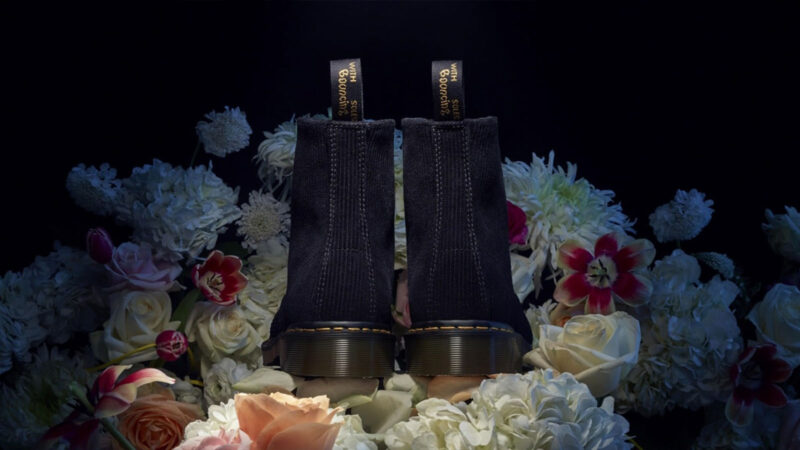
1460 Undercover
Dr. Martens and Undercover go way back, too, and the most recent collaboration birthed the 1460 Undercover, a black corduroy masterpiece featuring a colorful, downright cheerful floral liner. And a memorable collaboration with Virgil Abloh produced the Off-White x Undercover range, complete with “Underoffwhitecovers” T-shirts and hoodies.
To the Future
For all its ambiguity, Undercover has found strength in its complexities. The end result has always been dynamic, devilish, daring—yet equally peaceful, harmonious, and often blithe. Sure, the “punk” reference continues to hold true, but the brand’s evolvement over the years has shown that “punk” is entirely too Lilliputian to be its only driving force. Always enchanting, touched with grimness and distinction, Undercover covers vast ground that’s at once sinister and sophisticated.

